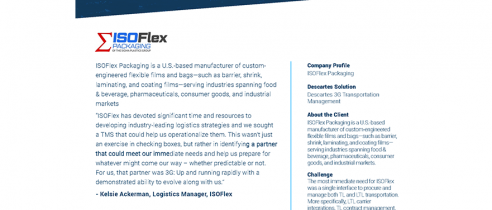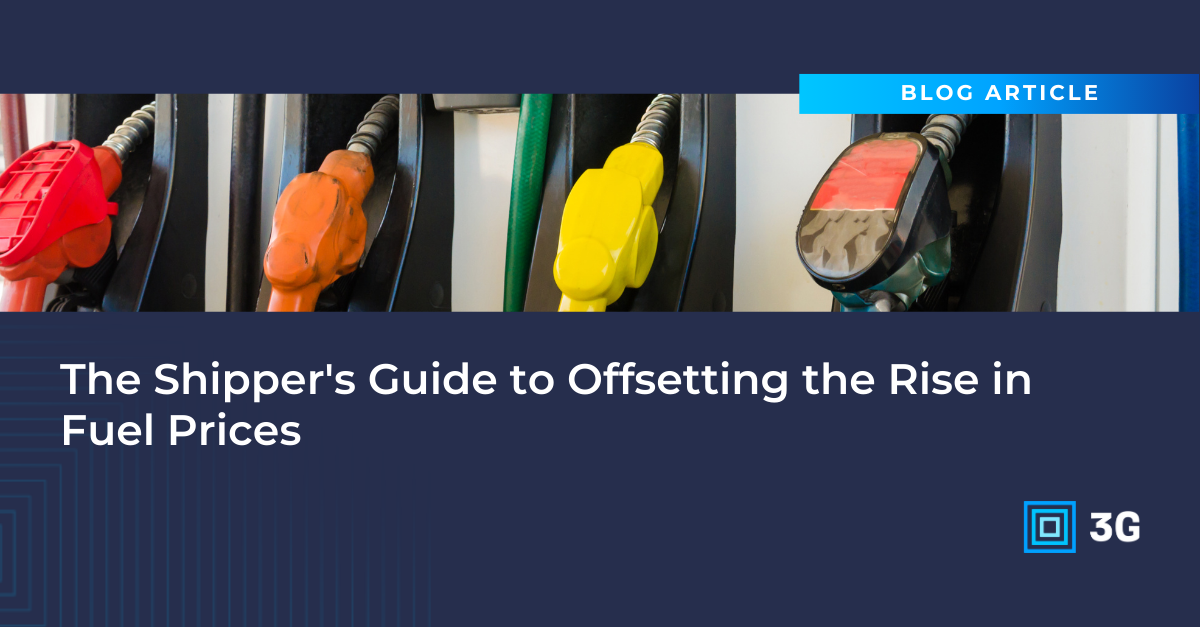Gas prices are on the rise, and consumers and businesses alike are feeling the impact. In 2023, a 20% surge in diesel fuel prices left trucking companies reeling during their busiest times of year. These higher fuel prices are driving up the costs of every mode of transportation, and the resulting rise in operating costs directly translates to higher shipping costs.
To continue offering competitive rates while remaining profitable, it’s essential to offset this rise in fuel prices. But with the cost of gas out of your control, the only way to find savings is to identify inefficiencies throughout your operation and get them under control.
Why Transportation Fuels Are So Expensive
Like every industry, the fuel sector has faced a number of disruptions throughout its supply chain, creating a cascade of constraints that result in a rise in fuel prices. Today, the biggest factors are around:
- Surging Crude Oil Prices
Geopolitical risks like the war in Ukraine have severely limited global crude oil supply, leading to higher costs for truck, plane, and ship fuel. As a result, some analysts fear benchmark prices could reach $100 per barrel before the end of the year. - Limited Refining Capacity
Refineries still recovering from the drop in fuel demand during the pandemic are now struggling to keep up with production needs, further constraining available supply and increasing prices. - Distribution Challenges
Geopolitical tensions have disrupted shipping routes and capabilities, making it difficult for the limited supply of crude oil to even reach intended markets. Distribution challenges also impact prices, especially with ongoing attacks against vessels in the Red Sea affecting shipment routes.
5 Ways to Offset the Rise in Fuel Prices
While no one company can correct the geopolitical and supply chain challenges constraining fuel supplies, you can offset their impact on your bottom line by making changes throughout your operation. The four best ways to make up for rising transportation fuel costs are to:
- Optimize OTR Routes
By analyzing routing data, transportation coordinators can identify the most efficient routes for drivers to minimize their total time on the road. This streamlined routing not only improves on-time delivery rates, but also significantly lowers fuel consumption and the need to spend at the pump. Companies like AmerCareRoyal have been able to reduce the amount of miles driven by 20% just by improving routing, saving over 200,000 gallons of diesel fuel a month, and cutting 22 million kilograms of CO2 from the atmosphere per year.
- Consolidate Loads
Combining multiple shipments into fewer deliveries can dramatically reduce per-unit fuel costs by maximizing the cargo space in each truck, resulting in more efficient shipping overall. Utilizing every inch of available space and grouping shipments strategically allows you to increase the number of items shipped in each truck while positioning them for easy unloading — an especially important benefit for multi-stop loads. This not only reduces fuel consumption, but also lowers overall transportation costs, further helping to offset the rise in fuel prices.
- Adopt a Multi-Carrier Strategy
Any time you work with a carrier, you’re not just paying for their service, but their operating costs, including any inefficiencies that increase fuel consumption — which get passed on to you. And that’s not to mention any fuel surcharges added to their fees. Taking a multi-carrier approach to shipping allows you to choose the most suitable carrier for each shipment and cargo requirement, with the potential to utilize local carriers for shorter distances and less fuel consumption.
- Secure Better Contracts
Leveraging good relationships with partner companies is one of the best ways to find cost savings, especially when it comes to fuel surcharges by carriers. Tracking the performance of each carrier (and metrics like on-time delivery rates, error rates, damage ratios, and more) can help you strengthen your negotiating position, or even help identify win-win dynamics that lead to more favorable rates, including better accessorial charges and fuel indexes.
- Leverage Regional and Local Carriers
Large national carriers often dominate the landscape because they have more visible capacity and serve bigger markets. However, leveraging regional and local carriers for LTL loads is a great strategy for reducing costs. These smaller companies are often overlooked due to technology gaps even though they can offer incredibly competitive rates, making them a helpful ally in offsetting rising fuel costs.
Offset the High Cost of Transportation Fuels With 3G
OTR route optimization, load consolidation, and carrier performance monitoring can be incredibly labor intensive, making it difficult to realize the full cost savings potential in each of these strategies. Fortunately, transportation software automates most aspects of the labor involved, allowing your team to not only reduce expenses immediately, but also scale operations in a more cost effective manner.
For decades, 3G has helped customers improve efficiency in every aspect of OTR transportation, as well as multimodal planning. Implementing a transportation software suite like 3G’s is key to helping offset the rise in fuel prices as well as other disruptions from market volatility, both now and in the foreseeable future. Want to experience the benefits of our software yourself? Schedule a demo today.








